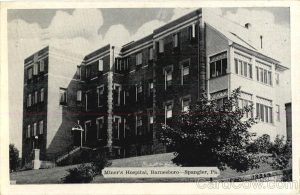
Even though he had impacted the lives of generations of my family who labored in the coal mines of England, and Scotland, and Pennsylvania, John Brophy is the most important labor leader nobody knows. I did not know who he was before I deposited myself in the Catholic University Archives, home of Brophy’s Papers, in 1989. The English born Brophy was one of our own and rose to leadership in the Central Pennsylvania district of the United Mine Workers of America (UMWA) in the early twentieth century. In this pivotal role he bettered the lives of mining families like mine achieving greater pay, safer working conditions, and accessible health care. In this last capacity, he presided over the 1919 construction of the Miner’s Hospital of Spangler, Pennsylvania, where my family members entered the world, departed life, and were treated for ailments, including my son, who was one of their last patients before closing its doors for the final time in 1999.[1]
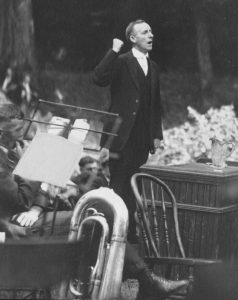
Brophy was born in 1883 in St. Helens, Lancashire, England. As recent Irish immigrants, the Brophys were new to the coal mines of England where his mother’s family, the Dagnalls, had been working for generations. One of Brophy’s English great grandmothers toiled in the mines, as was common for women and small children, before being prohibited to do so by Lord Shaftesbury’s Mines and Collieries Act of 1842. The Brophy family immigrated to the United States in 1892 and settled in Phillipsburg, Clearfield County, Pennsylvania. Young Brophy began working in the coal mines with his father in 1894, and joined the United Mine Workers of America (UMWA) in 1899. As a union activist, Brophy was elected president in 1916 of District 2, representing Central Pennsylvania. The signature highlight of his presidency was getting the celebrated ‘Mother’ Mary Harris Jones, known as ‘The Miners’ Angel,’ to visit his district to give a 1921 Labor Day Address.
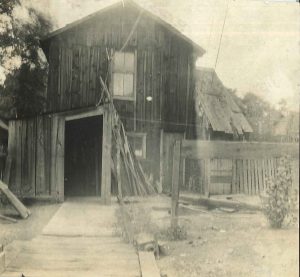
In the early 1920s, Brophy was a member of the Nationalization Research Committee, which supported nationalizing the mining industry. He remained as UMWA District 2 president until 1926 when he challenged John L. Lewis for the UMWA Presidency. After obtaining victory using questionable methods, the vindictive Lewis expelled Brophy from the union.[2] He did not serve officially in the labor movement, though he researched the history of mining in the United States and taught for a labor school in Pittsburgh. For many years, he continued to support the nationalization of mines, and visited the Soviet Union as part of a trade union delegation. Additionally, he worked for the Columbia Conserve Cooperative in Indiana, run by the father of labor activist Powers Hapgood. In 1933, he returned to organized labor when Lewis brought him back into the UMWA bureaucracy. He then became an important figure in the national office of the Committee for Industrial Organizations (CIO), an industrial union federation, after it was founded in 1935.
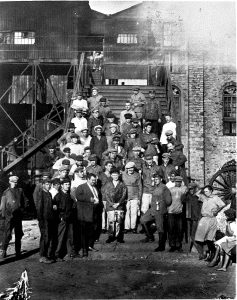
From 1935-1938, Brophy was the CIO’s first National Director. He was also Director of Industrial Union Councils and Director of Industrial Unions. He tirelessly traveled to assist in the creation of state and local industrial union councils, support important strikes, and speak as a representative of the national CIO. He was a mainstay in the CIO national office during its twenty year existence as an independent labor federation. In his capacity as a CIO representative, he often traveled abroad to meet with international labor organizations, and served on a number of government agencies, such as the National War Labor Board and the Wage Stabilization Board. After the merger of CIO with the American Federation of Labor (AFL) in 1955, he continued work in the national AFL-CIO office as a trouble shooter, as well as serving with the Community Services Department.
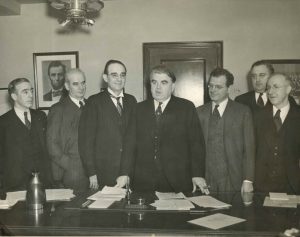
Brophy was only able to finish a draft of his autobiography. It was later edited and rewritten with the help of John Hall, and published in 1964, the year after his death, as A Miner’s Life. Brophy’s vehement advocacy for workers’ rights was influenced by his deep Roman Catholic faith, and his reliance on the papal encyclicals on social justice of Pope Leo XIII (Rerum Novarum, 1891) and Pope Pius XI (Quadregisimo Anno, 1931). His personal papers, which include portions currently being digitized, reside in the Special Collections of The Catholic University of America in Washington, D.C. The papers of his colleague Phillip Murray, and the pre 1955 merger records of the Congress of Industrial Organizations (CIO), the organization they both helped found, are also maintained here. Additional Brophy related materials can be found in the labor history collections of the Indiana University of Pennsylvania (IUP) and Penn State University (PSU).
[1] John Brophy, A Miner’s Life. Madison and Milwaukee: University of Wisconsin Press, 1964, pp. 217-219; Maier B. Fox, United We Stand: The United Mine Workers of America, 1890-1990, Washington, D.C.: United Mine Workers of America, 1990, pp. 290-291; Robert Zieger, The CIO, 1935-1955. Chapel Hill and London: University of North Carolina Press, 1995, p. 27.
[2] An incarnation of old Miner’s Hospital survives in nearby Hastings, PA, as Conemaugh Miners Medical Center.

2 thoughts on “The Archivist’s Nook: John Brophy – A Pennsylvania Miner’s Life”